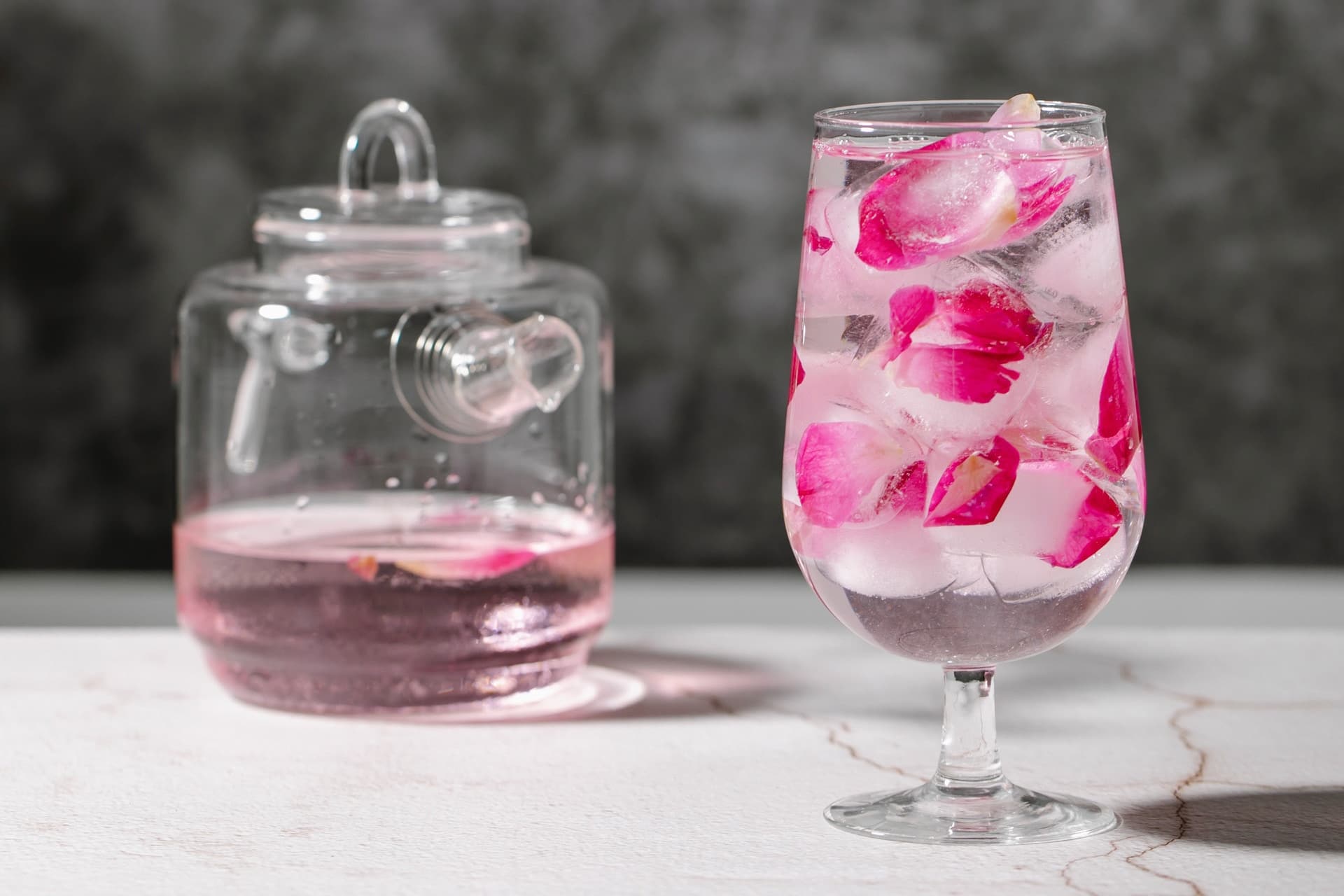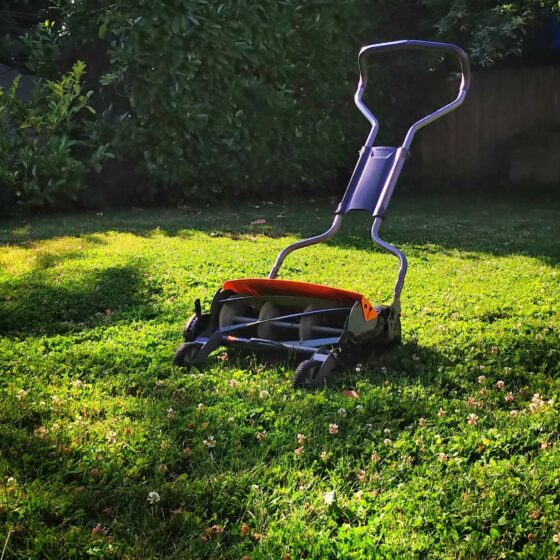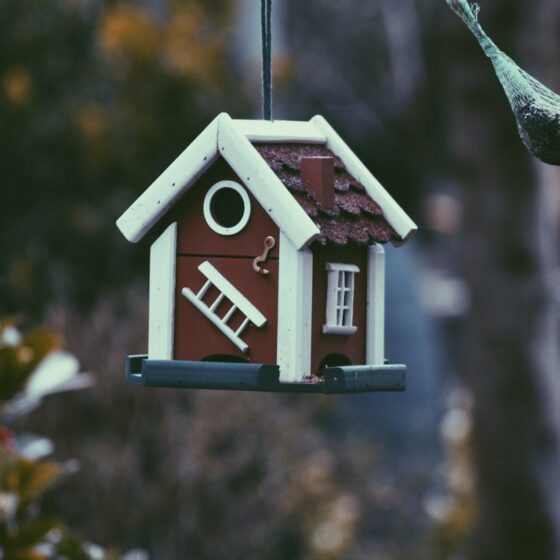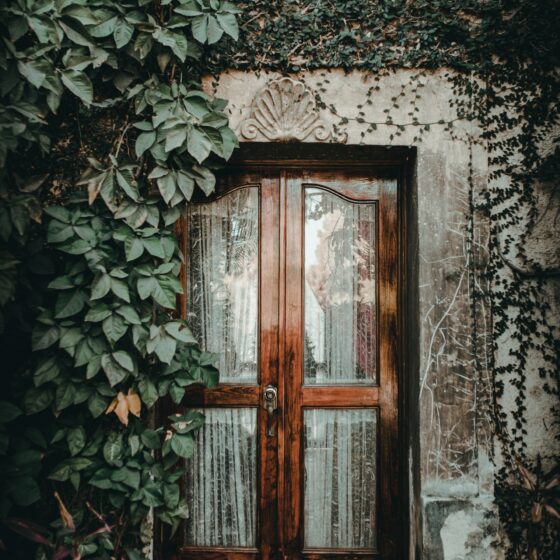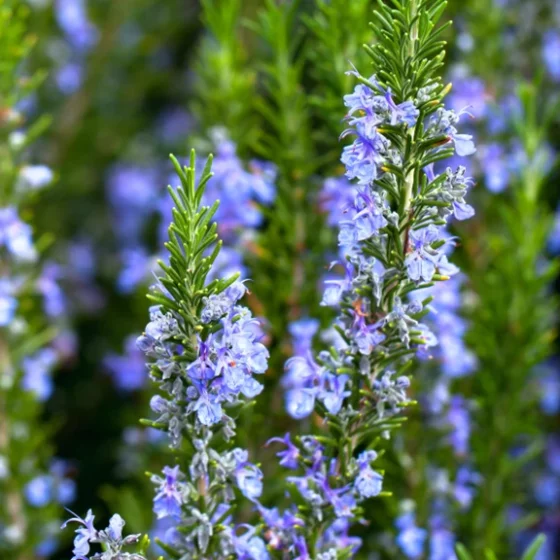The first thing that comes to mind when you think about using flowers in the kitchen is usually for decor purposes. But flowers do more and have a long history of adding some elegance and a peculiar touch to several meals—something that goes far back into Middle Eastern cuisines.
Rose water is one of those special culinary ingredients that can work wonders when used in various desserts and drinks—but you need to know how to use it. And this article will show you just how to use rose water for cooking.
What Is Rose Water?
Like the name suggests, rose water is a liquid sourced from rose petals. Processing this liquid requires distilling rose petals with steam or steeping them in water. The process originated centuries ago in ancient Persia (present Iran).
In earlier centuries, the Persians acquired this unique liquid by crushing the petals and steam-distilling them to draw out their essential oils. The liquid left behind from the process is what is known as rose water. An alternative (and more direct) process involves steeping rose petals in hot water to obtain the liquid.
As rose water’s popularity grew in the Middle East and South Asia, people found many things to do with it in the kitchen. Today, you can use rose water with spices like jasmine, cardamom, and saffron. It also goes pretty well with nuts like coconuts, pistachios, and almonds, or citrus fruits such as oranges and lemons. You can also add it to various rice dishes, tea, and a host of other delicacies.
Fortunately, using rose water in your dishes is very easy. However, just a tiny amount is all you need due to its very strong nature.
Health Benefits of Rose Water
Besides the several uses for rose water in cooking, it also offers several health benefits. Here are some of them:
- Healing properties: Rose water is popular for its healing properties. You can add a little bit of it to your preferred drinks to soothe a sore throat. You can also use it to aid in preventing and treating a host of infections.
- Anti-stress properties: Many believe that rose water also carries stress-relieving properties capable of calming you down and helping you relax.
- Nutritionally rich: Rose water comes in several varieties. One of them is Damask rose water, which is rich in essential minerals, valuable vitamins, and antioxidants.
- Promotes healthy skin: Rose flower also features as a common ingredient in many skin products. That’s because it is believed to promote healthy skin by moisturizing it. Rose water may also soothe skin irritation, reduce redness, heal cuts, soothe burns, and clear scars.
- Hydration: Beyond moisturizing the skin, rose water can also help you stay hydrated. If you don’t like drinking plain water, you can add a tiny amount of the liquid to a glass of water to add a bit more flavor and help your body stay hydrated.
Where to Buy Rose Water
You can find rose water in various markets and online stores. You can visit any major grocery store, supermarket, or mall, and check out the baking or international aisle. Or you can search for the product on various online eCommerce platforms like Amazon.
It’s good to know that high-quality rose water appears transparent and is very clear—almost as clear as clean drinking water. While some varieties may be available in colors like pink, you should stay away from them since they may contain unnecessary additives and other artificial ingredients.
To be sure, only consider options that come with descriptions like “distilled” or “pure” on their labels. Also, make sure that “rose water” is listed as the main ingredient on the label.
How to Make Rose Water at Home
If you don’t want to buy already-packed rose water, you can try making it from scratch at home. Yes, it’s possible, and the ancient Persians have proven that. In addition, embarking on your DIY rose water manufacturing project should not take you more than an hour to start and finish. Use the recipe below to create a cup and a half of homemade rose water for cooking.
- You’ll need the following ingredients: one cup of fresh Rose petals thoroughly rinsed, and one and a half cups of clean, distilled water.
- Start by adding your petals and water to a saucepan and heating it.
- Lower the heat a little once the water begins to simmer, and cover your pan with a lid.
- Allow it to simmer until rose petals lose all their color, which will take up to about 30 minutes.
- Next, turn off the heat completely and allow it to cool down for about 20 to 30 minutes.
- Once it cools, use a clean, fine mesh sieve to drain the water while removing every petal and any other particle.
- Pour your liquid into a jar and store it in your refrigerator for up to 30 days.
It’s that simple!
How to Store Rose Water
Once you finish making your rose water, you need to keep it refrigerated for up to 30 days. Then, it’s ready for use. The moment it’s out of your refrigerator and ready to use, there is no need to keep it refrigerated, as it will naturally retain its fresh and natural aroma.
The best way to store your freshly made rose water is to keep it in a cool, dry place. This could be your pantry or in a kitchen cabinet. If you bought rose water in a store, there is no need to refrigerate it at all. Again, you can easily store it in a cool, dry place, away from direct light as much as possible.
In most cases, if rose water is pure, you can expect it to have a very long shelf life. But if you’re unsure, don’t hesitate to give it a taste before you use it in your meals.
How to Cook with Rose Water
Rose water will quickly elevate food flavoring and give your drinks a unique taste if you prepare them the right way. Because of the liquid’s very strong flavor, it is important to be extremely cautious about using it. In most cases, a tiny amount of rose water is more than enough to make the difference in any dish.
Its floral component makes it an excellent addition to baked delicacies like cupcakes and cookies, and frozen treats like granita and sorbet. You can also add rose water essence or rose extract to vanilla extracts to create a super potent combo. This mixture can work wonders on desserts and baked goodies because of the luscious, creamy flavor it adds. For all of these, you wouldn’t need more than a drop or two (depending on the quantity you’re preparing) to make all the difference.
Beyond the sweet treats and baked goodies, rose water is also an excellent ingredient for savory dishes. It perfectly compliments aromatics like ginger, saffron, cumin, coriander, cardamom, and so many more. You can also add it to your favorite vegetarian dishes, such as quinoa salad or vegetable biryani.
Fortunately, there are numerous recipes with rose water, so you have a lot to try!
Conclusion
Rose water is a gamechanger in the kitchen, as you can apply it to various dishes, both sweet and savory, to produce rich flavor and enhance the taste. This liquid also offers many health benefits, including moisturizing and soothing the skin, healing, and relieving stress. While you can find already-packaged rose water in various stores, you can also make it home in less than an hour.
FAQ
Which rose water is best for cooking?
Opt for rose water that is especially fragrant without being overwhelming. Other than that, you can use any rose water you make at home for cooking.
Can rose water be heated?
Yes, rose water is suitable for both cooking and baking. Therefore, you can heat it up if a recipe requires it.
Can I use skin rose water for cooking?
Any rose water is suitable for cooking unless it is specially manufactured to use on the skin alone. However, many skin products contain rose water only as one of their ingredients. Therefore, it’s best to check the product’s label to see if it’s food grade.
Is rose water edible?
Yes, rose water is edible. However, it has a very strong flavor, so it is recommended to measure the quantity you use. In most cases, a drop or two is more than enough.
Is rose water good for biryani?
Rose water for cooking is great for biryani, as its distinctive flavor can quickly lift the taste, add flavor, and compliment the aroma. All you need is a little sprinkle of rose water on your biryani when done to add to the taste.

